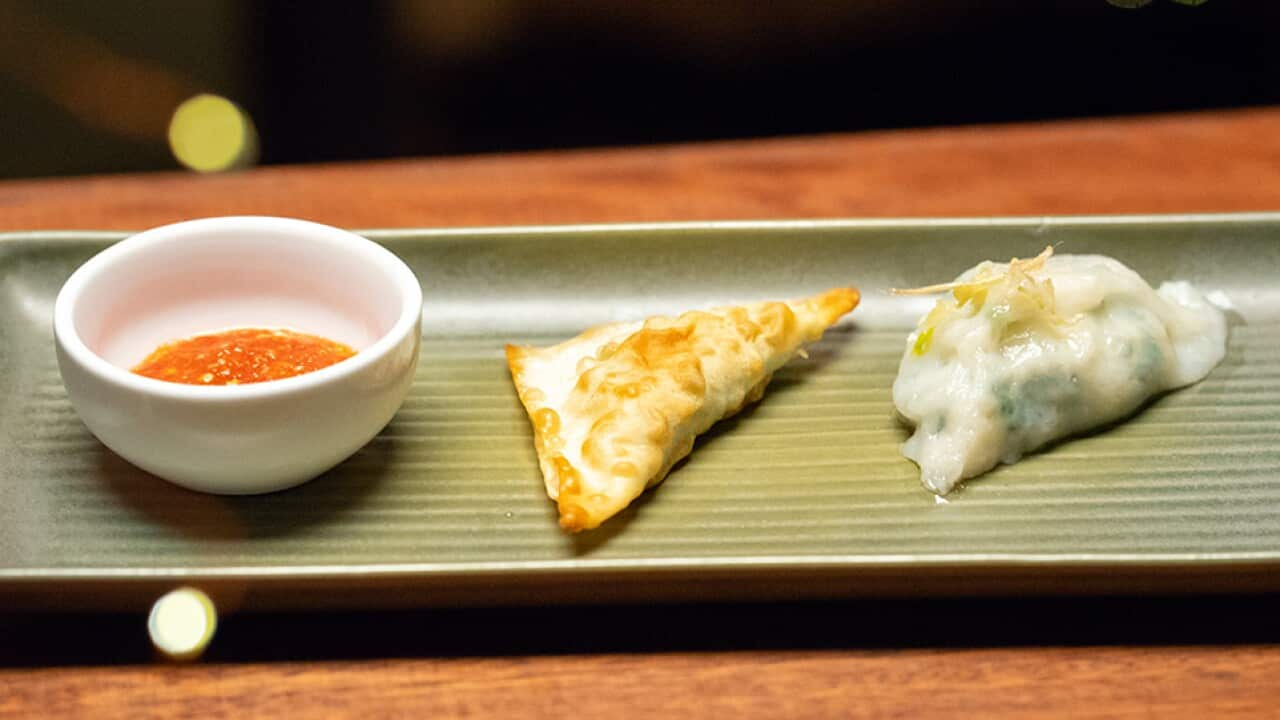--- Bask in a Chinese food bounty like no other as Adam Liaw's series . Check out for recipes, videos and more! ---
No matter how far or wide you travel throughout the Australian expanse, it’s pretty likely that you’ll see one common sight: the local Chinese restaurant.
Yet Chinese restaurants in Australia are not just dining destinations. They are a symbol of cultural diversity that reveals a story about our immigration history and a long tale about our acceptance and rejection of foreign peoples and foods.
Author of Jan O’Connell, explains that the presence of commercially available Chinese food in Australia dates back when the first major wave of Chinese migrants worked in cookhouses on the goldfields. “These cookhouses that the Chinese started provided gold miners with meals and catered for Chinese and European tastes,” O’Connell tells SBS. “There were a number of these cookhouses in Victoria during the gold rush and the same phenomenon happened again later, during gold rushes in Queensland and WA.”
“These cookhouses that the Chinese started provided gold miners with meals and catered for Chinese and European tastes,” O’Connell tells SBS. “There were a number of these cookhouses in Victoria during the gold rush and the same phenomenon happened again later, during gold rushes in Queensland and WA.”

Fried egg noodles are a familiar sight on Australian menus. (Alan Benson) Source: Alan Benson
Chinese migration to Australia continued until the next century, with many newly arrived Chinese taking up jobs as cooks.
However, once the White Australia policy was introduced in , anti-Chinese sentiment prevailed among various quarters of society and Chinese immigration took a short-term dive.
“The policy made it more difficult for Chinese people to migrate to Australia. The whole Chinese culture – including restaurants – went through a bit of a slump [for a few years].”
Historian, Barbara Nichol, says in the , Chinese food soon started to be appreciated by ‘bohemian’ Australians and workers requiring late-night meals.
“By the turn of the 20th century, the city’s emerging intelligentsia of artists, writers and later, university and college communities were venturing into Chinatown,” says Nichol.
“City workers, suppliers of local Chinese businesses, and nurses and doctors coming off late shifts at the hospital also started eating at Chinese restaurants or getting take-away Chinese food. They were grateful for the welcoming atmosphere of Chinese restaurants in a city [Melbourne or Sydney that was] almost closed down at night.”
The Chinese food served in restaurants at this time was as many new arrivals were from Guangdong. Menus also catered for Western tastes serving steak, chops, bread and stews.

Salt and pepper silken tofu: a staple at your local Chinese restaurant. (Alan Benson) Source: Alan Benson
Encouragement for the Chinese restaurant trade
The Chinese restaurant trade picked up in the 1930s to allow Chinese restaurants to import temporary labour from China.
“That’s when really a new wave of Chinese restaurants started to emerge,” says O’Connell. “There was a bit of a change in attitude towards the Chinese people in the 1930s because the Japanese invaded China – there was a bit more sympathy for the Chinese people.”
The second (1937-1945) also saw many Chinese seamen and refugees come to Australia. Some took up work in restaurants, while others went onto run Chinese cafes.
The influx of American service men into Australia then led to a rise in demand for varied Chinese cuisines and more Chinese restaurants.
“But it wasn’t until , that Asian immigration was encouraged at all. It was still very difficult for people to migrate permanently from China until quite late in the piece.”
That’s when really a new wave of Chinese restaurants started to emerge. There was a bit of a change in attitude towards the Chinese people in the 1930s because the Japanese invaded China – there was a bit more sympathy for the Chinese people.
O’Connell suggests that anti-Chinese community sentiment helped to preserve the cultural identity and survival of Chinese restaurants in Australia.
“There was always a necessity for the Chinese people living in Australia to maintain their own culture and cooking traditions. So it’s probably the fact that there was a sense of ‘apartness’ – that the Chinese people were never really accepted or integrated into Australian society until the 1950s-60s – [that enabled the Chinese restaurant to maintain a distinct identity].”
In this way, anti-Chinese community sentiment also ensured the spread of Chinese restaurants throughout the nation and guaranteed the longevity of this specific type of small food business.
“It was only after the 1960s that we became more accepting of Chinese migrants and more people in Australia embraced the idea of going to Chinese restaurants to eat. By the time we reached the 1970s, different varieties of Chinese cooking started to arrive in Australia and the more upmarket Chinese restaurants started to attract non-Chinese diners.”
The presence of Chinese restaurants in Australia has a strong foundation, having survived two world wars, discriminatory government policies and immigration hurdles over the past 100 years.
It’s clear to say this historical foundation means that Australia’s local Chinese restaurants are here to stay for many more decades to come.
Destination Flavour China is sponsored by Cathay Pacific. For more information, please visit 

Source: Cathay Pacific





